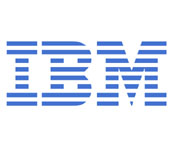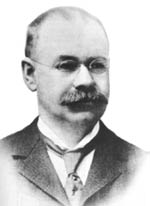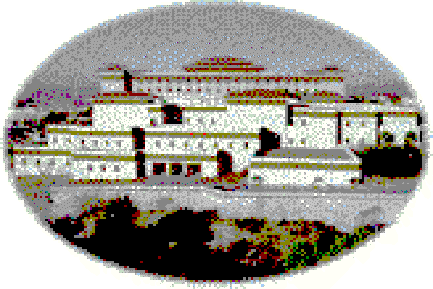What Is
EBCDIC?
Is the where you finally an answer
question:
So, everyone uses ASCII now, right??
You bet.

 No
-- not everyone uses ASCII. The Extended Binary Coded Decimal
Interchange Code (EBCDIC) was basically developed by Herman
Hollerith in the 1880's. Hollerith started a company called the Tabulating
Machine Company, which later became The Computer Tabulating Recording Company,
which finally Became International Business Machines (IBM). It was intended as a binary code for alphabetic and numeric characters
initially for it's punched cards and later for
its larger operating systems. It was the code for text files that is used in
IBM's OS/390 operating system for its S/390 servers and that thousands of
corporations use for their legacy applications and databases.
No
-- not everyone uses ASCII. The Extended Binary Coded Decimal
Interchange Code (EBCDIC) was basically developed by Herman
Hollerith in the 1880's. Hollerith started a company called the Tabulating
Machine Company, which later became The Computer Tabulating Recording Company,
which finally Became International Business Machines (IBM). It was intended as a binary code for alphabetic and numeric characters
initially for it's punched cards and later for
its larger operating systems. It was the code for text files that is used in
IBM's OS/390 operating system for its S/390 servers and that thousands of
corporations use for their legacy applications and databases.
In an EBCDIC file, each alphabetic or numeric character is
represented with an 8-bit binary number (a string of eight 0's or 1's). 256
possible characters (letters of the alphabet, numerals, and special characters)
are defined.
So what?
Note that ASCII was
originally based on a 7-bit character set. In that sense, EBCDIC was ahead of it's time.
What are the differences between
ASCII and EBCDIC?
There are
quite a few difference (and some similarities), as a quick comparison of the
first 16 binary sequences shows:
| Binary |
ASCII |
EBCDIC |
| 00000000 |
NUL |
Null |
NUL |
Null |
| 00000001 |
SOH |
Start of Heading (CC) |
SOH |
Start of Heading |
| 00000010 |
STX |
Start of Text (CC) |
STX |
Start of Text |
| 00000011 |
ETX |
End of Text (CC) |
ETX |
End of Text |
| 00000100 |
EOT |
End of Transmission (CC) |
PF |
Punch Off |
| 00000101 |
ENQ |
Enquiry (CC) |
HT |
Horizontal Tab |
| 00000110 |
ACK |
Acknowledge (CC) |
LC |
Lower Case |
| 00000111 |
BEL |
Bell |
DEL |
Delete |
| 00001000 |
BS |
Backspace (FE) |
|
|
| 00001001 |
HT |
Horizontal Tabulation (FE) |
|
|
| 00001010 |
LF |
Line Feed (FE) |
SMM |
Start of Manual Message |
| 00001011 |
VT |
Vertical Tabulation (FE) |
VT |
Vertical Tab |
| 00001100 |
FF |
Form Feed (FE) |
FF |
Form Feed |
| 00001101 |
CR |
Carriage Return (FE) |
CR |
Carriage Return |
| 00001110 |
SO |
Shift Out |
SO |
Shift Out |
| 00001111 |
SI |
Shift In |
SI |
Shift In |
Which coding scheme is better?
It doesn't
seem that one is better than the other, just different.
Why didn't IBM adopt ASCII?
IBM had a
large investment in EBCDIC.
By 1964
IBM had spent hundreds of millions of dollars developing a new line of mainframe
computers, called the System 360. Nonetheless, IBM was tempted to
adopt ASCII as the internal language of its new computer line. But there was one
problem. For years IBM and its customers had been using Hollerith-style punch
cards to enter and store data. And the "collating sequence or sorting order, of
the Hollerith code was incompatible with the new ASCII code. If IBM adopted the
new code, it could alienate its existing customers, force them to update all
their data files, and reduce the chances the new computer line would be
successful (http://www.karenware.com/newsletters/2000/2000-10-23.asp).
WAIT!! I just remembered. I have an
IBM PC and it uses ASCII!!
 Yes
it does. That is because in 1981, IBM commissioned Microsoft to develop the
Operating System (MS-DOS) for it's PCs (The first time they had NOT developed
the operating system in-house). MS-DOS uses ASCII.
Yes
it does. That is because in 1981, IBM commissioned Microsoft to develop the
Operating System (MS-DOS) for it's PCs (The first time they had NOT developed
the operating system in-house). MS-DOS uses ASCII.
You mean ASCII is in the Operating
System and not in hardware?
Of course. As we already know, the computer is essentially nothing more than a
series of light switches.
Some good references include:
-
A Brief History
of Character Codes
-
Table of EBCDIC
Characters
-
ASCII and EBCDIC
Compared
At this point in time, you should be
able to Answer the following questions:
- What is EBCDIC and
why was it
developed?
The Extended Binary Coded Decimal Interchange Code
(EBCDIC) was basically developed by Herman Hollerith in the 1880's. It was
IBM's coding scheme and was intended as a binary code for alphabetic and numeric characters
initially for it's punched cards and later for its
larger operating systems.
- How is EBCDIC different than ASCII?
First, EBCDIC relied on 8-bits, whereas ASCII
initially relied on 7-bits. Additionally EBCDIC associates different symbols
with it's bit sequences, and has some different characters.
- IBM’s Mainframe Coding scheme is
called:
a. American Standard Code for Information Interchange
b. International Business Machine Coding of Characters
c. Extended Basic Code for Decimal Information Characters
d. Extended Binary Coded Decimal Interchange Code
e. All Purpose Binary Coded Interchange of Information
Answer: d
- EBCDIC is different that ASCII in
that:
a. It has some different symbols
b. It was originally an 8-bit coding scheme
c. The bit-sequences used are different
d. None of the above
e. All of the above
Answer: e
- IBM didn't adopt ASCII because
a. EBCDIC was a superior coding scheme
b. It had a large investment in EBCDIC
c. ASCII was too expensive to install
d. ASCII wouldn't work in IBM systems
e. All of the above
Answer: b

This page was last updated on
01/09/05

 CIS3355:
Business Data Structures
CIS3355:
Business Data Structures